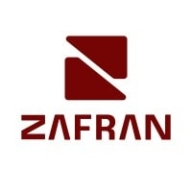


Lacework FortiCNAPP and Automox are cloud security solutions with Automox perceived as superior due to its comprehensive features despite higher pricing.
Features: Lacework excels with robust cloud security analytics, seamless integration, automated threat detection, compliance reports, anomaly detection, and agent-based vulnerability management. Automox offers comprehensive endpoint protection, configuration management, cross-platform patching abilities, and an intuitive interface, appealing to environments requiring broad operational security improvements.
Room for Improvement: Lacework could improve its anomaly alerts' specificity and deploy a more user-friendly interface. Additionally, enhancing integration flexibility and increasing customization in threat detection would be beneficial. Automox may enhance third-party software patching, introduce advanced customization in its configurations, and streamline policy setup processes for more complex use cases.
Ease of Deployment and Customer Service: Lacework offers straightforward deployment but faces technical challenges. Automox provides a more intuitive setup with efficient ongoing management, benefiting from efficient customer service that distinguishes it from Lacework's technical deployment challenges.
Pricing and ROI: Lacework presents a competitive cloud security pricing model apt for cloud-native enterprises with a respectable ROI, while Automox's higher initial cost is balanced by a significant return on investment due to enhanced endpoint management and operational security features. Automox's premium pricing is justified by its extensive feature set. Exact pricing details are not provided.



Zafran Security integrates with existing security tools to identify and mitigate vulnerabilities effectively, proving that most critical vulnerabilities are not exploitable, optimizing threat management.
Zafran Security introduces an innovative operating model for managing security threats and vulnerabilities. By leveraging the threat exposure management platform, it pinpoints and prioritizes exploitable vulnerabilities, reducing risk through immediate remediation. This platform enhances your hybrid cloud security by normalizing vulnerability signals and integrating specific IT context data, such as CVE runtime presence and internet asset reachability, into its analysis. No longer reliant on patch windows, Zafran Security allows you to manage risks actively.
What are the key features of Zafran Security?
What benefits can users expect from Zafran Security?
In industries where security is paramount, such as finance and healthcare, Zafran Security provides invaluable protection by ensuring that only exploitable vulnerabilities are addressed. It allows entities to maintain robust security measures while allocating resources efficiently, fitting seamlessly into existing security strategies.
Facing growing threats and a rapidly expanding attack surface, understaffed and alert-fatigued organizations need more efficient ways to eliminate their exposure to vulnerabilities. Automox is a modern cyber hygiene platform that closes the aperture of attack by more than 80% with just half the effort of traditional solutions.
Cloud-based and globally available, Automox enforces OS & third-party patch management, security configurations, and custom scripting across Windows, Mac, and Linux from a single intuitive console. IT and SecOps can quickly gain control and share visibility of on-prem, remote and virtual endpoints without the need to deploy costly infrastructure.
Automox dramatically reduces corporate risk while raising operational efficiency to deliver best-in-class security outcomes, faster and with fewer resources.
Lacework FortiCNAPP provides robust cloud security, combining vulnerability management and multi-cloud insight with user-friendly controls, machine learning detection, and compliance support.
Lacework FortiCNAPP specializes in cloud security by merging machine learning anomaly detection with agent-based vulnerability management to offer detailed alerts and compliance reports. Its comprehensive approach allows continuous monitoring across AWS and Kubernetes, providing insights from an attacker's perspective. The platform offers automation and seamless Slack integration, facilitating collaborative and efficient cloud security management. Users value its ability to handle multi-cloud environments and scan IAC scripts, configurations, and compute nodes across AWS and GCP.
What are the key features?Organizations across sectors leverage Lacework FortiCNAPP for cloud security, focusing on compliance, security posture, and vulnerability management. It is widely used for monitoring AWS and Kubernetes environments, scanning IAC scripts, configurations, and securing compute nodes. It supports multi-cloud security posture management and log ingestion, enabling companies to maintain strong cloud infrastructures without dedicated security layers.
We monitor all Vulnerability Management reviews to prevent fraudulent reviews and keep review quality high. We do not post reviews by company employees or direct competitors. We validate each review for authenticity via cross-reference with LinkedIn, and personal follow-up with the reviewer when necessary.